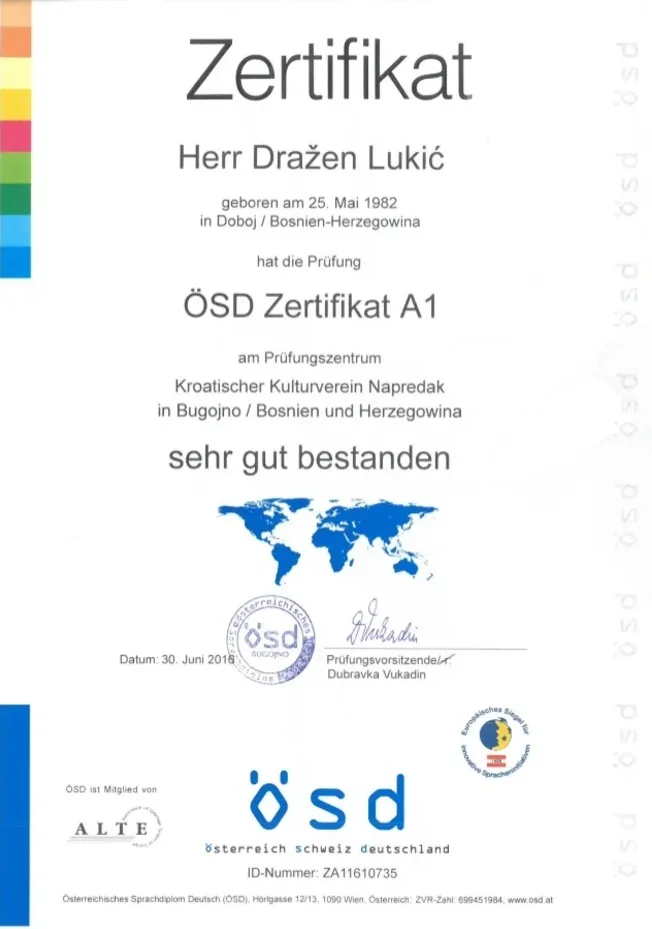Comprehending the ÖSD Exam: A Gateway to Proficiency in German
The ÖSD (Österreichisches Sprachdiplom Deutsch) exam is a standardized language proficiency test created to assess and license German language skills. Acknowledged internationally, the ÖSD exam accommodates different learners, varying from newbies to advanced speakers. This post aims to offer a helpful summary of the ÖSD exam, detailing its structure, levels, preparation strategies, and regularly asked concerns.
The Importance of the ÖSD Exam
In a globalized world where proficiency in numerous languages is extremely valued, the ÖSD exam serves a number of important functions:
Accreditation of Language Proficiency: The ÖSD exam uses certificates that are recognized in Austria and other German-speaking nations, helping with employment chances and university admissions.
Standardized Assessment: The exam offers a standardized evaluation of language abilities, which can be beneficial for scholastic and professional purposes.
Structured Learning Path: The ÖSD provides a clear structure for language students, assisting them towards achieving specific language goals through a structured curriculum.
Structure of the ÖSD Exam
The ÖSD exam is divided into different levels aligned with the Common European Framework of Reference for Languages (CEFR). Each level tests 4 key language skills: listening, reading, composing, and speaking.
Levels of the ÖSD Exam
The ÖSD offers assessments at six levels, representing the CEFR framework:
A1: Beginner
A2: Elementary
B1: Intermediate
B2: Upper Intermediate
C1: Advanced
C2: Proficiency
Each level has specific requirements and expectations, allowing candidates to focus on ideal products and practices based on their efficiency.
Exam Components
The ÖSD exam is divided into 4 distinct elements:
Listening Comprehension: Candidates listen to various audio materials (discussions, interviews, and presentations) and address comprehension questions.
Checking out Comprehension: This section consists of texts of varying lengths and complexities, accompanied by questions that examine understanding and interpretation.
Writing: Candidates are needed to produce written texts (letters, essays, or reports) depending on the level, demonstrating their capability to communicate details and arguments successfully.
Speaking: The speaking part normally includes a conversation with an inspector, requiring prospects to show fluency, pronunciation, and grammatical accuracy.
Preparation for the ÖSD Exam
Getting ready for the ÖSD exam needs a strategic method, integrating numerous research study approaches and resources. Here are some reliable methods:
Study Methods
Enlist in a Language Course: Structured courses can supply assistance and a systematic approach to language knowing.
Practice with Sample Tests: Using main ÖSD sample materials can familiarize prospects with the exam format and concern types.
Join a Study Group: Collaborating with peers can enhance finding out through shared understanding and accountability.
Use Language Learning Apps: Mobile applications can support language acquisition, providing vocabulary practice and interactive workouts.
Resources
Textbooks and Workbooks: Choose products that align with the target level of the ÖSD exam.
Online Platforms: Websites committed to language learning often provide totally free resources, consisting of grammar exercises and vocabulary lists.
Tutoring: Personal instruction from skilled teachers can use customized feedback and targeted practice.
Geothe Zertifikat 4 All for Success
Set Realistic Goals: Break down the preparation procedure into workable turning points.
Engage with Native Speakers: Regular interaction with native German speakers can improve conversational abilities and cultural understanding.
Immerse Yourself in the Language: Consume German-language media-- such as movies, podcasts, and books-- to boost listening and checking out abilities.
Practice Regularly: Consistency is type in language knowing; assign time every day for practice across all four abilities.
Regularly Asked Questions (FAQs).
1. What are the primary differences between the ÖSD exam and other German language tests?
The ÖSD exam particularly concentrates on modern German usage and culture, providing an unique viewpoint compared to other exams, such as the TestDaF or the Goethe-Zertifikat. Each assessment has various structures, levels, and emphasis on numerous abilities, catering to specific requirements and target market.

2. The length of time does it require to prepare for the ÖSD exam?
Preparation time differs significantly based upon the prospect's existing language abilities. Normally, it can take anywhere from a few months to over a year of devoted research study to get ready for each level.
3. Is there an age limit to take the ÖSD exam?
No, there is no age limit for prospects wishing to take the ÖSD exam. People of all ages, from kids to adults, are encouraged to get involved based upon their language efficiency and goals.
4. Where can I take the ÖSD exam?
ÖSD examinations are administered at different authorized assessment centers worldwide. Prospects can go to the official ÖSD site to find a center near them and to examine offered dates.
5. How are ÖSD exam results scored?
Candidates get a rating for each part of the exam, which is then combined to give an overall efficiency level. Outcomes are generally readily available a few weeks post-examination.
Conclusion.
The ÖSD exam is a respected language efficiency test that functions as a vital tool for individuals looking for to demonstrate and accredit their German language skills. Through efficient preparation, structured learning, and access to the ideal resources, prospects can attain their wanted proficiency level, enhancing their opportunities in both academic and expert domains.
